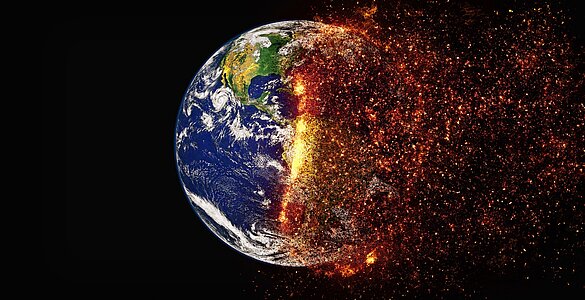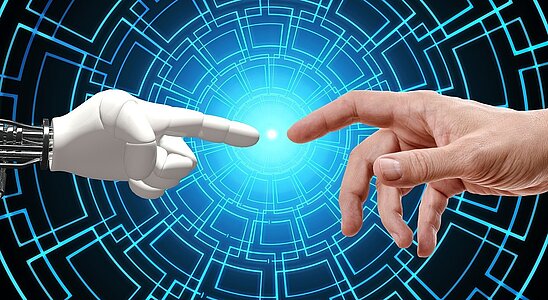Systemic risks
Anyone who usually only has to deal with doomsayers can breathe a sigh of relief here. Fear and anger are emotions that modern media have always liked to play with in order to secure their audience figures, regardless of the topic. This page clearly sets itself apart from that. Despite the serious situation, positive motivation and joy in change and reshaping are of crucial importance.
That's why on this site the reader is alerted to various systemic risks to our human world and at the same time is informed about possible solution methods and successes that have already been achieved. In addition, he has access to a collection of articles and publications on each topic.
What is actually meant by systemic risks?
A system is a collection of elements which are linked to each other in a certain way. Planet Earth is a system, in which innumerable fine mechanisms interlock in a way, whose complexity exceeds our present knowledge by far. Nevertheless, through logical observations of this system, factors can be identified that interfere with its functioning. On this page, some of these disruptive factors are presented as system risks for our infrastructures and high-tech world.
Climate change
An increase of the global average temperature causes changes on the entire planet. Changes which are determined in their intensity by how high the temperature rises and in which time span this happens. It is not easy to scientifically prove the influence of climate change on certain changes to our planet. Changes that accumulate at the same time as the temperature increases do not have to be directly related to climate change. Nevertheless, with the help of the data and knowledge that mankind has already accumulated about climate and weather, many logical connections can be considered. These can serve as a basis for possible solutions. One thing is certain: the climate is changing, and it is essential for the protection of global infrastructures and the mitigation of great suffering that we humans invest enormous effort in researching possible climate mitigation strategies.
Pandemics and human health
The interaction between the steady advance of humans into previously untouched natural areas, which are reservoirs for many hundreds of thousands of unknown pathogens, and ongoing globalization makes pandemics increasingly likely. The focus of attention is the ongoing deforestation of tropical rainforests, as they represent the most biodiverse regions on earth. On the one hand, this creates new interfaces at which pathogens can be transmitted to humans. But the resulting loss of biodiversity also significantly increases the potential for pandemics. Due to the loss of the originally preferred host organisms, pathogens switch, if possible, to other potential hosts. It is estimated that there are over 500,000 as yet unknown pathogens that can infect humans in addition to animal hosts. In addition to deforestation, wildlife trade also significantly increases the risk of pandemics. Globalization then allows pathogens to spread ever faster across the planet.
Artificial intelligence
When the supercomputer "Deep Blue" won 4:2 against the reigning world chess champion in 1996, everyone who followed this historic event realised that it is possible to build and programme computers that can solve certain tasks and problems better than a human being. At that time, "Deep Blue" is said to have won the game not through higher intelligence, but through pure computing power. Since then, in addition to the computing power that a computer is capable of, our technical understanding of how to build artificial intelligence has greatly increased, so that the development of AIs that are more powerful and intelligent than any human being is quite conceivable within this century, if the majority accepts the development with constant carelessness. Without really realising it, we have allowed intelligent computer systems to do more and more of our work for us, to make decisions for us and to filter the information we receive about our environment. From smartphones to smart homes, every new invention that helps make everyday life more convenient has been gratefully and unquestioningly embraced by many people. Yet the greatest risk posed by artificially intelligent systems is our own unreflective use of them.
War
There are many factors that make wars increasingly likely and dangerous in the future. These include the other systemic risks presented here. Mass movements due to advancing climate change, the different ways of dealing with pandemics and the development of artificial intelligence (AI) and other dangerous technologies, immensely increase the already prevailing political tensions. But it is not only the ever greater and more rapidly changing redistribution of power among different countries that poses an immense risk of war. The ever easier access to increasingly dangerous technologies and developments for private individuals increases the risk of wars, as these will no longer be a matter of state in the future. Strengthening an international interest in peace and security is essential, the latter not through ever stronger deterrence, but through negotiating peace and disarmament treaties and through the common goal of allowing the development of dangerous technologies, such as AI, to take place within a common controlled framework.











